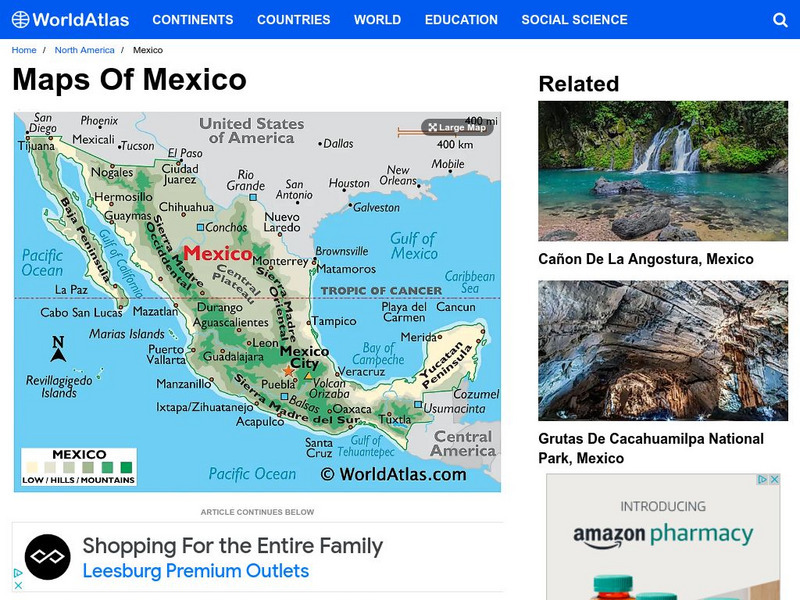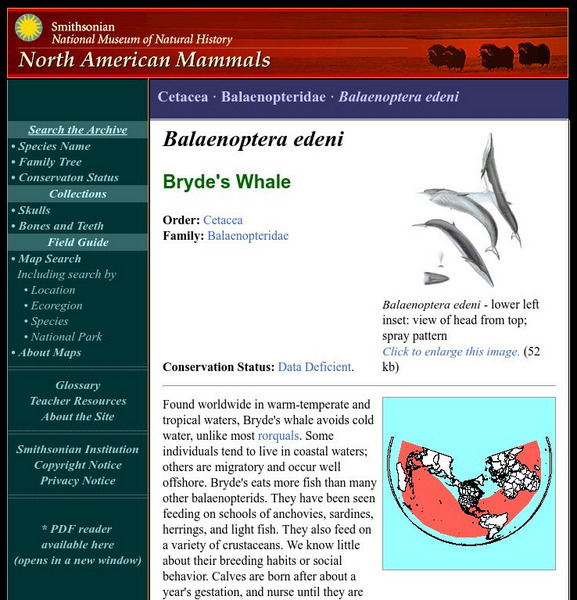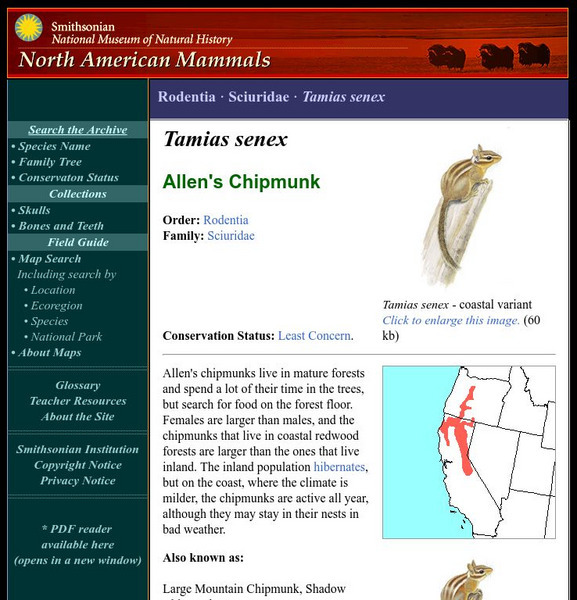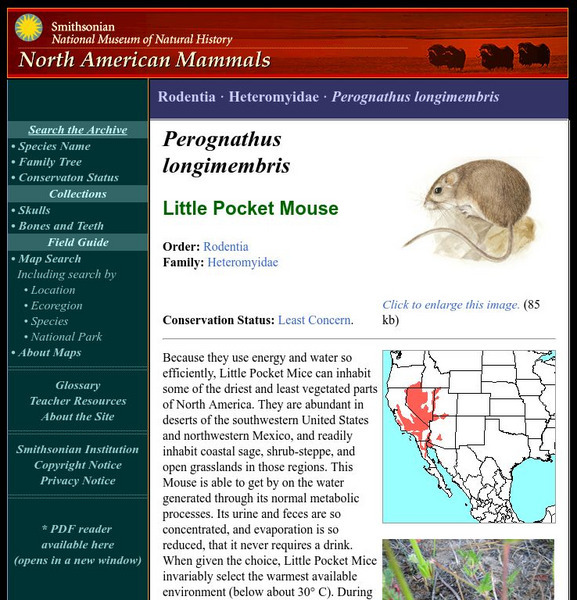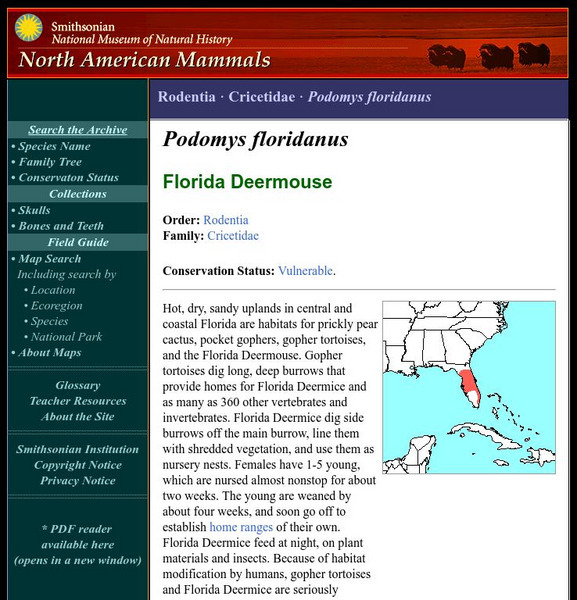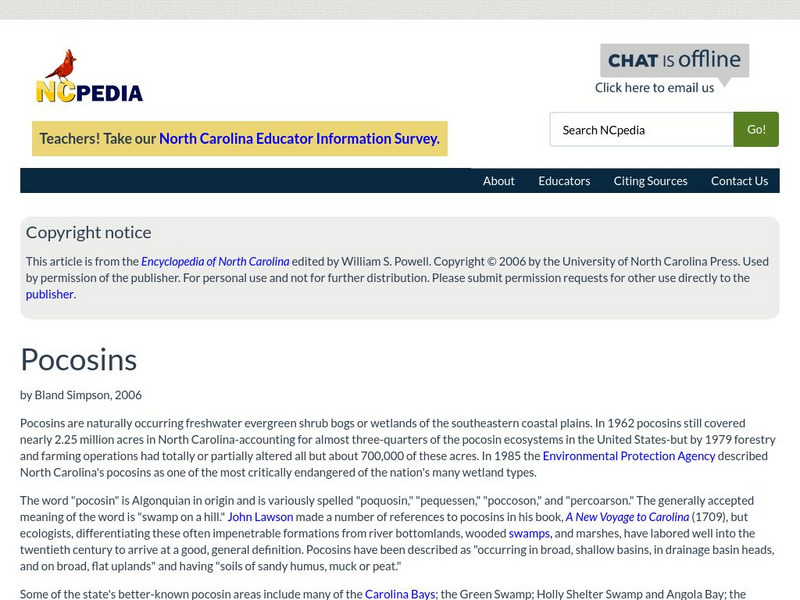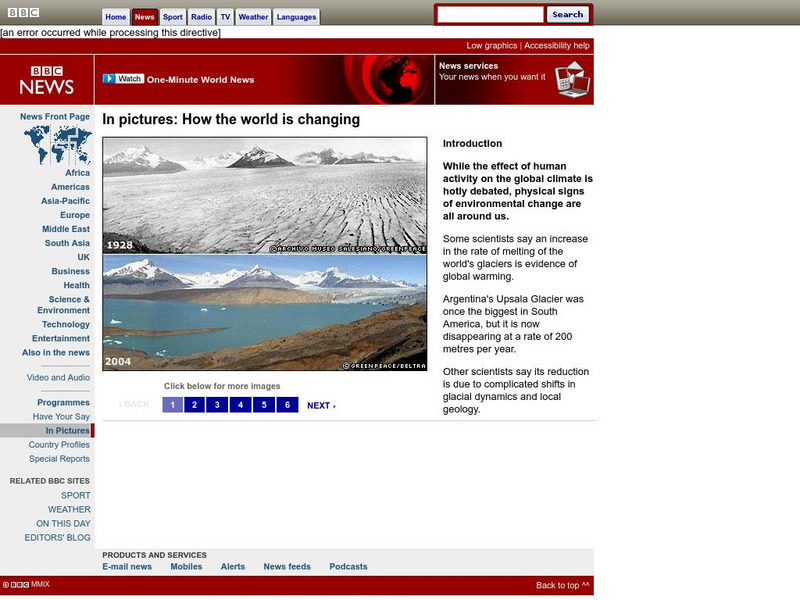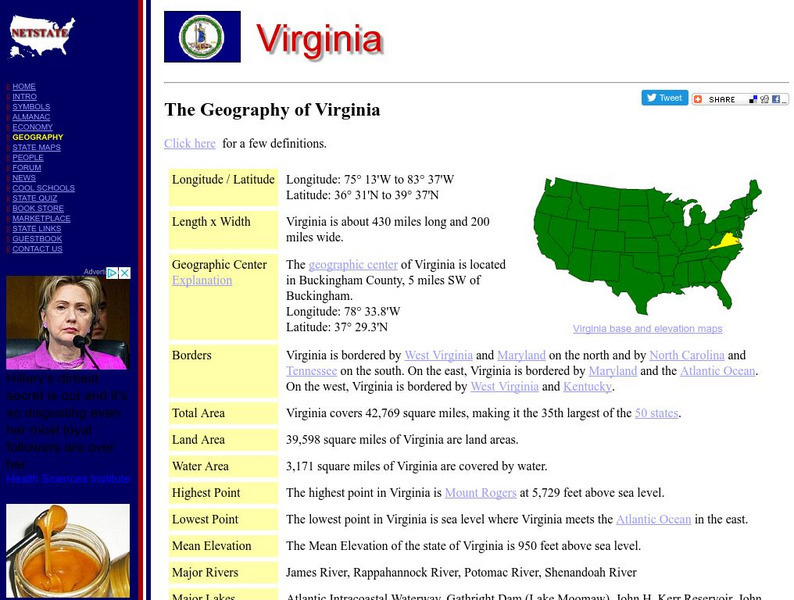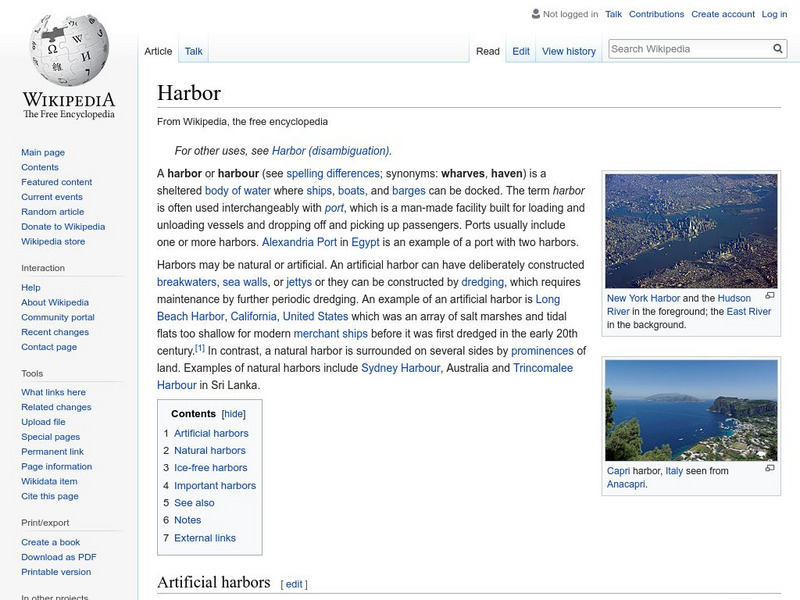Other
Ecotrust: Temperate Rain Forest People and Places [Pdf]
This site from Ecotrust has information on the people and history of the Northwestern American coastal temperate rain forest.(California to Alaska) Find out about the history of this specific temperate rain forest, and the people it has...
World Atlas
World Atlas: Mexico
Provided here is a description of Mexico's geography including its mountain ranges, coastal plains, plateaus, volcanoes and peninsulas.
Other
Ny Dec: Estuary Management Programs
Site from NY DEC gives general information on estuaries and their ecological importance to the NY and NJ coastal areas. Gives more specific information on the Peconic Estuary and the New York/New Jersey Harbor Estuary, with a focus on...
ClassFlow
Class Flow: Georgia
[Free Registration/Login Required] The student will locate major topographical features of Georgia and will describe how these features define Georgias surface. Locate all the geographic regions of Georgia: Blue Ridge Mountains,...
Smithsonian Institution
National Museum of Natural History: American Mammals: Bryde's Whale
Found worldwide in warm-temperate and tropical waters, Bryde's whale avoids cold water, unlike most rorquals. Some individuals tend to live in coastal waters; others are migratory and occur well offshore. Learn more about the...
Smithsonian Institution
National Museum of Natural History: American Mammals: Atlantic Spotted Dolphin
The Atlantic spotted dolphin is seen in coastal waters from the Carolinas south to Brazil, usually staying within about 350 km of the coast. Another population is known from the Gulf Stream near New England. Learn more about the Stenella...
Smithsonian Institution
National Museum of Natural History: American Mammals: Allen's Chipmunk
Allen's chipmunks live in mature forests and spend a lot of their time in the trees, but search for food on the forest floor. Females are larger than males, and the chipmunks that live in coastal redwood forests are larger than the ones...
Smithsonian Institution
National Museum of Natural History: American Mammals: Wolverine
Wolverines are widely distributed in the northern reaches of both hemispheres. In North America, they occupy remote habitats from the high mountainous interior of the Rockies to Arctic coastal tundra. Learn more about the Gulo gulo, more...
Smithsonian Institution
National Museum of Natural History: American Mammals: Marsh Shrew
Large for a shrew and with velvety dark fur, the Marsh Shrew can be found in marsh, stream, and beach habitats of the coastal rain forest in extreme southwestern Canada and the Pacific Northwest of the United States. This shrew is...
Smithsonian Institution
National Museum of Natural History: American Mammals: Vagrant Shrew
Vagrant Shrews live in moist habitats throughout their range. They are common in lakeside or streamside communities of sedges, grasses, and willows, and in coastal salt marshes. Learn more about the Sorex vagrans, more commonly known as...
Smithsonian Institution
National Museum of Natural History: American Mammals: San Diego Pocket Mouse
The San Diego Pocket Mouse occurs in desert and coastal habitats in southern California, Mexico, and northern Baja California, from sea level to at least 1,400 m. Yellowish or orange hair on its sides contrasts with a dark brown back,...
Smithsonian Institution
National Museum of Natural History: American Mammals: West Indian Manatee
West Indian manatees are big, slow-moving, gentle vegetarians. They live in warm, shallow water in coastal rivers, estuaries, and lagoons. Learn more about the Trichechus manatus, more commonly known as a West Indian Manatee, in this...
Smithsonian Institution
National Museum of Natural History: American Mammals: Narrow Faced Kangaroo Rat
The Narrow-faced Kangaroo Rat, also known as the Santa Cruz Kangaroo Rat, occurs in central coastal California where annual rainfall is 75 cm and temperatures are moderate. It requires well-drained, deep soils and is often found on...
Smithsonian Institution
National Museum of Natural History: American Mammals: Little Pocket Mouse
Because they use energy and water so efficiently, Little Pocket Mice can inhabit some of the driest and least vegetated parts of North America. They are abundant in deserts of the southwestern United States and northwestern Mexico, and...
Smithsonian Institution
National Museum of Natural History: American Mammals: Florida Mouse
Hot, dry, sandy uplands in central and coastal Florida are habitats for prickly pear cactus, pocket gophers, gopher tortoises, and the Florida Mouse. Gopher tortoises dig long, deep burrows that provide homes for Florida Mice and as many...
State Library of North Carolina
N Cpedia: Pocosins
Pocosins are naturally occurring freshwater evergreen shrub bogs or wetlands of the southeastern coastal plains. In 1962 pocosins still covered nearly 2.25 million acres in North Carolina-accounting for almost three-quarters of the...
Peace Corps
Peace Corps: Fighting Soil Erosion
Educate students about soil erosion with this thorough lesson plan which focuses on the geography of Guinea.
BBC
Bbc News: In Pictures: How the World Is Changing
View and read about climate change by comparing two images of the same location at different times.
NSTATE
Netstate.com: The Geography of Virginia
Find a variety of facts about the geography of Virginia: geographic center, total area, elevations, and much more.
NOAA
Noaa: Ocean Facts on Runoff Pollution
Find out how water pollution can be prevented and how it affects you.
InterKnowledge Corp.
Inter Knowledge Corp: Ghana
InterKnowledge Corp provides basic facts about the location, geography, climate, history and culture of the country Ghana.
Mex Connect
Mex Connect: Mexican Art, Authors and Artisans
The listing of Mexican artists, artisans, authors, and art makes it easy to "pick and choose." Oodles of information here.
Wikimedia
Wikipedia: Harbor
This Wikipedia entry provides information on ship harbors while clarifying the difference between harbors and ports. Topics include both natural and artificial harbors. Gives links to places that are examples of different types of harbors.
US Navy
Office of Naval Research: Ocean Currents
Probe the basics of ocean currents and be ready for the "quick quiz" upon completion of your reading. A concise and effective site supplemented with drawings.
Other popular searches
- Coastal Erosion
- Coastal Zones
- North Carolina Coastal Plain
- Coastal Management
- Coastal Plants and Animals
- Coastal Climate
- Coastal American Indians
- Coastal Change Analysis
- Coastal Monitoring
- Coastal Ecosystems
- Coastal Area
- Coastal and Marine Resources
![Ecotrust: Temperate Rain Forest People and Places [Pdf] Article Ecotrust: Temperate Rain Forest People and Places [Pdf] Article](https://d15y2dacu3jp90.cloudfront.net/images/attachment_defaults/resource/large/FPO-knovation.png)
